Prestack Seismic Velocity Ratio Evaluation of a Mixed Siliciclastic–Carbonate Formation: Case Study from the Strawn Group on the Eastern Shelf Texas
Abstract
:1. Introduction
2. Geology
3. Database
4. Methods
4.1. Cross Plots of Velocity Ratio (Vp/Vs) Versus Impedance
4.2. Simultaneous Inversion
4.3. Petrophysical Inversion and Lithology Interpretation
4.4. Petrographic Analysis
5. Results
5.1. 3D Seismic Interpretation, Map at Top Strawn
5.2. Simultaneous Seismic Inversion, Distribution of Elastic Properties
5.3. Interpretation
6. Discussion
6.1. High-Vp/Vs-Ratio Deposits
6.2. Low-Vp/Vs-Ratio Deposits
6.3. Vp/Vs Ratios and Petrographic Analysis
6.3.1. Vp/Vs Ratios and Well 6 Petrographic Analysis from Rotary Core
6.3.2. Vp/Vs Ratios and Wells 9 and 10 Petrographic Analysis from Conventional Core
7. Conclusions
Author Contributions
Funding
Data Availability Statement
Acknowledgments
Conflicts of Interest
References
- Payros, A.; Pujalte, V. Calciclastic submarine fans: An integrated overview. Earth Sci. Rev. 2008, 86, 203–246. [Google Scholar] [CrossRef]
- Chiarella, D.; Longhitano, S.G.; Tropeano, M. Types of mixing and heterogeneities in siliciclastic-carbonate sediments. Mar. Pet. Geol. 2017, 88, 617–627. [Google Scholar] [CrossRef] [Green Version]
- Tucker, M.E. Mixed Clastic–Carbonate Cycles and Sequences: Quaternary of Egypt and Carboniferous of England. Geol. Croat. 2003, 56, 19–37. [Google Scholar] [CrossRef]
- Cleaves, A.W. Strawn and Canyon Depositional Systems, Sedimentation History and Exploration Models for the Concho Platform-Eastern Shelf of North-Central Texas. Abilene Geol. Soc. 1983, pp. 1–83. Available online: https://archives.datapages.com/data/abilene/data/strawn_canyon83/Strawn_Canyon_83.htm (accessed on 20 October 2022).
- Cleaves, A.W.; Erxleben, A.W. Upper Strawn and Canyon cratonic depositional systems of Bend Arch, north-central Texas. In Transactions of the AAPG Southwest Section Regional Meeting; McNulty, C., McPherson, J.C., Eds.; Fort Worth Geological Society: Fort Worth, TX, USA, 1985; pp. 27–46. [Google Scholar]
- Boring, T.H. Upper Strawn (Desmoinesian) carbonate and clastic depositional environments, southeast King County, Texas. In Petroleum Reservoir Geology in the Southern Midcontinent, 1991 Symposium; Johnson, K.S., Campbell, J.A., Eds.; University of Oklahoma: Norman, CA, USA, 1993; pp. 195–198. [Google Scholar]
- Russell, B.H.; Hampson, D.; Bankhead, B. An inversion primer. CSEG Rec. Spec. Issue 2006, 31, 96–103. [Google Scholar]
- Yenwongfai, H.D.; Mondol, N.H.; Faleide, J.I.; Lecomte, I.; Leutscher, J. Pre-stack inversion and multiattribute analysis for porosity, shale volume, and sand probability in the Havert Formation of the Goliat field, southwest Barents Sea. Interpretation 2017, 5, SL69–SL87. [Google Scholar] [CrossRef] [Green Version]
- Maxan, J. Variation of density with rock type, depth, and formation in the Western Canada Basin from density logs. Geophysics 1980, 15, 1061–1076. [Google Scholar] [CrossRef]
- Braun, J.; Simon-Labric, T.; Murray, K.E.; Reiners, P.W. Topographic relief driven by variations in surface rock density. Nat. Geosci. 2014, 7, 534–540. [Google Scholar] [CrossRef]
- Tatham, R.H.; McCormack, M.D. Multicomponent Seismology in Petroleum Exploration: Investigations in Geophysics; SEG: Houston, TX, USA, 1985; Volume 6, 248p. [Google Scholar]
- Christensen, N.I. Poisson’s ratio and crustal seismology. J. Geophys. Res. 1996, 101, 3139–3156. [Google Scholar] [CrossRef]
- Robertson, J.D. Carbonate porosity from S/P traveltime ratios. Geophysics 1987, 52, 1346–1354. [Google Scholar] [CrossRef]
- Pardus, Y.; Conner, J.; Schuler, N.; Tatham, R. Vp/Vs, Lithology in Carbonate Rocks: A Case History in the Scipio Trend in Southern Michigan; SEG Technical Program Expanded Abstracts 1990; Society of Exploration Geophysicists: Houston, TX, USA, 1990; pp. 169–172. [Google Scholar]
- O’Connell, R.J.; Budiansky, B. Seismic velocities in dry and saturated cracked solids. J. Geophys. Res. 1974, 79, 5412–5426. [Google Scholar] [CrossRef]
- Takei, Y. Effect of pore geometry on VP/VS: From equilibrium geometry to crack. J. Geophys. Res. 2002, 107, ECV6-1–ECV6-12. [Google Scholar] [CrossRef]
- McCormack, M.D.; Justice, M.G.; Sharp, W.W. A stratigraphic interpretation of shear and compressional wave seismic data for the Pennsylvanian Morrow formation of southeastern New Mexico. AAPG Memoir 1985, 39, 224–239. [Google Scholar]
- Lee, M.W.; Norton, G.A.; Groat, C.G. Velocity Ratio and Its Application to Predicting Velocities; US Department of the interior, US Geological Survey: Reston, VA, USA, 2003; Volume 2197, pp. 1–15. Available online: https://pubs.usgs.gov/bul/b2197/B2197-508.pdf (accessed on 10 November 2022).
- Watanabe, T. Effects of water and melt on seismic velocities and their application to characterization of seismic reflectors. Geophysics. Res. Lett. 1993, 20, 2933–2936. [Google Scholar] [CrossRef]
- Hosseini-Fard, E.; Roshandel-Kahoo, A.; Soleimani-Monfared, M.; Khayer, K.; Ahmadi-Fard, A.R. Automatic seismic image segmentation by introducing a novel strategy in histogram of oriented gradients. J. Pet. Sci. Eng. 2022, 209, 109971. [Google Scholar] [CrossRef]
- Hosseini, A.; Ziaii, M.; Rouhani, A.K.; Roshandel, A.; Gholami, R.; Hanachi, J. Artificial intelligence for prediction of porosity from seismic attributes: Case study in the Persian Gulf. Iran. J. Earth Sci. 2011, 3, 168–174. [Google Scholar]
- Al Salem, O.B. The Subsidence Evolution of the Fort Worth Basin in North-Central Texas. Master’s Thesis, The University of Texas at Arlington, Arlington, TX, USA, 2014. Available online: https://rc.library.uta.edu/uta-ir/bitstream/handle/10106/24705/AlSalem_uta_2502M_12753.pdf?sequence=1&isAllowed=y. (accessed on 3 December 2022).
- Marshak, S. Earth: Portrait of a Planet; WW Norton & Company: New York, NY, USA, 2001; pp. 528–529. ISBN 0-393-97423-5. [Google Scholar]
- Cleaves, A.W. Sequence stratigraphy, systems tracts, and mapping strategies for the subsurface Middle and Upper Pennsylvanian of the eastern shelf. In AAPG Southwest Section, Regional Meeting, Transactions; Crick, R.E., Ed.; Fort Worth Geological Society: Fort Worth, TX, USA, 1993; pp. 26–42. [Google Scholar]
- Cleaves, A.W. Sequence stratigraphy and reciprocal sedimentation in Middle and Late Pennsylvanian carbonate-bank systems, eastern shelf of the Midland Basin, north-central Texas. In Platform Carbonates in the Southern Midcontinent; Johnson, K.S., Ed.; University of Oklahoma: Norman, OK, USA, 2000; Volume 101, pp. 227–257. [Google Scholar]
- Hampson, D.; Russell, B.; Bankhead, B. Simultaneous Inversion of Pre-Stack Seismic Data; SEG Technical Program Expanded Abstracts 2005; Society of Exploration Geophysicists: Houston, TX, USA, 2005; pp. 1633–1636. Available online: https://library.seg.org/doi/epdfplus/10.1190/1.2148008 (accessed on 30 December 2022).
- Ma, X. Simultaneous inversion of prestack seismic data for rock properties using simulated annealing. Geophysics 2002, 67, 1877–1885. [Google Scholar] [CrossRef]
- Fatti, J.; Smith, G.; Vail, P.; Strauss, P.; Levitt, P. Detection of gas in sandstone reservoirs using AVO analysis: A 3D Seismic Case History Using the Geostack Technique. Geophysics 1994, 59, 1362–1376. [Google Scholar] [CrossRef]
- Fu, Q.; Ambrose, W.A. Lithofacies and diagenetic features of Strawn carbonates in the subsurface of North-Central Texas: Implications to controls on reservoir quality. GCAGS 2020, 9, 115–132. [Google Scholar]
- Weger, R.J.; Eberli, G.P.; Baechle, G.T.; Massaferro, J.L.; Sun, Y.F. Quantification of pore structure and its effect on sonic Velocity and permeability in carbonates. AAPG Bull. 2009, 93, 1297–1317. [Google Scholar] [CrossRef]
- Rossebo, O.H.; Brevik, I.; Ahmadi, G.R.; Adam, L. Modeling of acoustic properties in carbonate rocks: SEG Expanded Abstracts. Soc. Explor. Geophys. 2005, 24, 1505–1508. [Google Scholar]
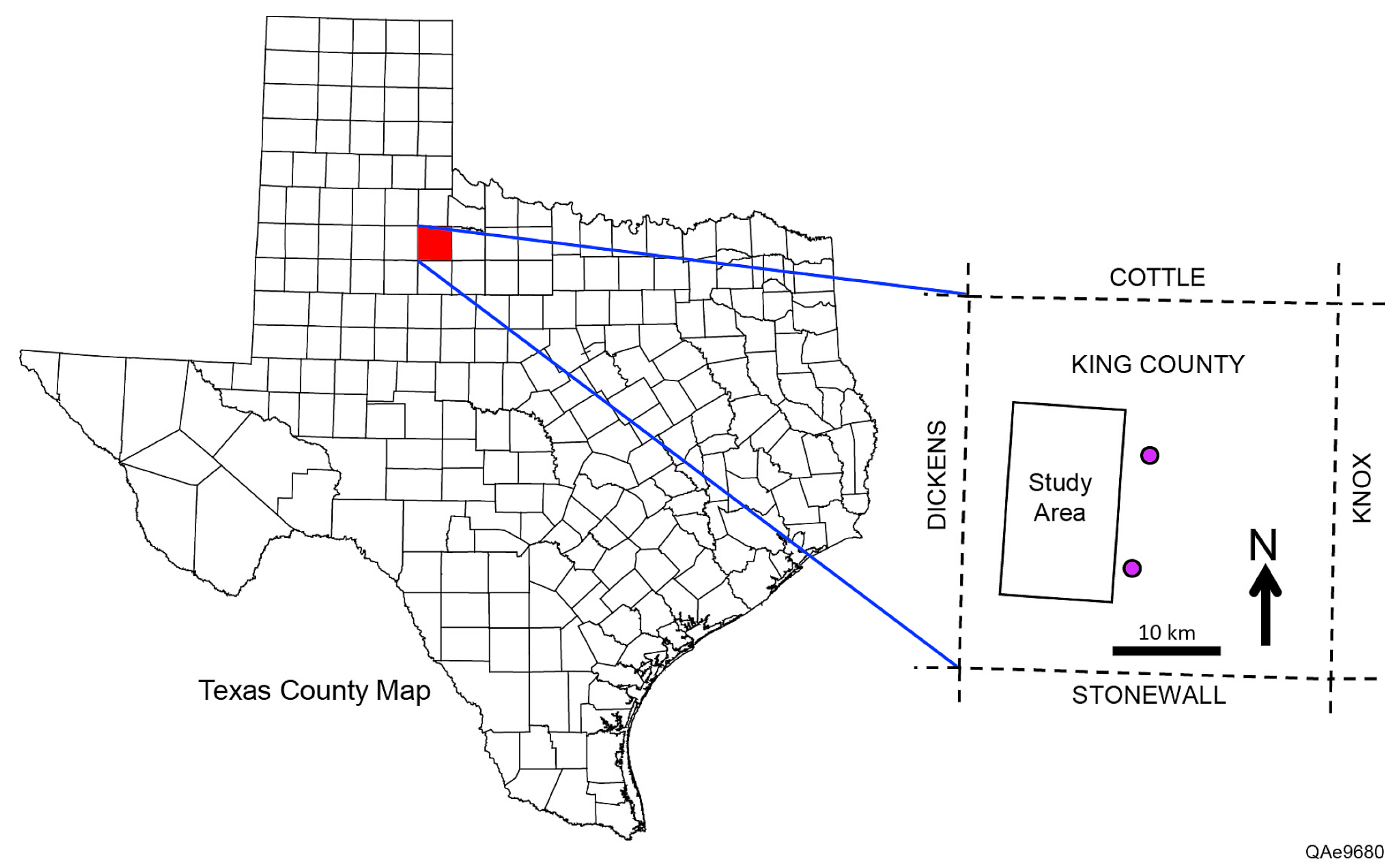


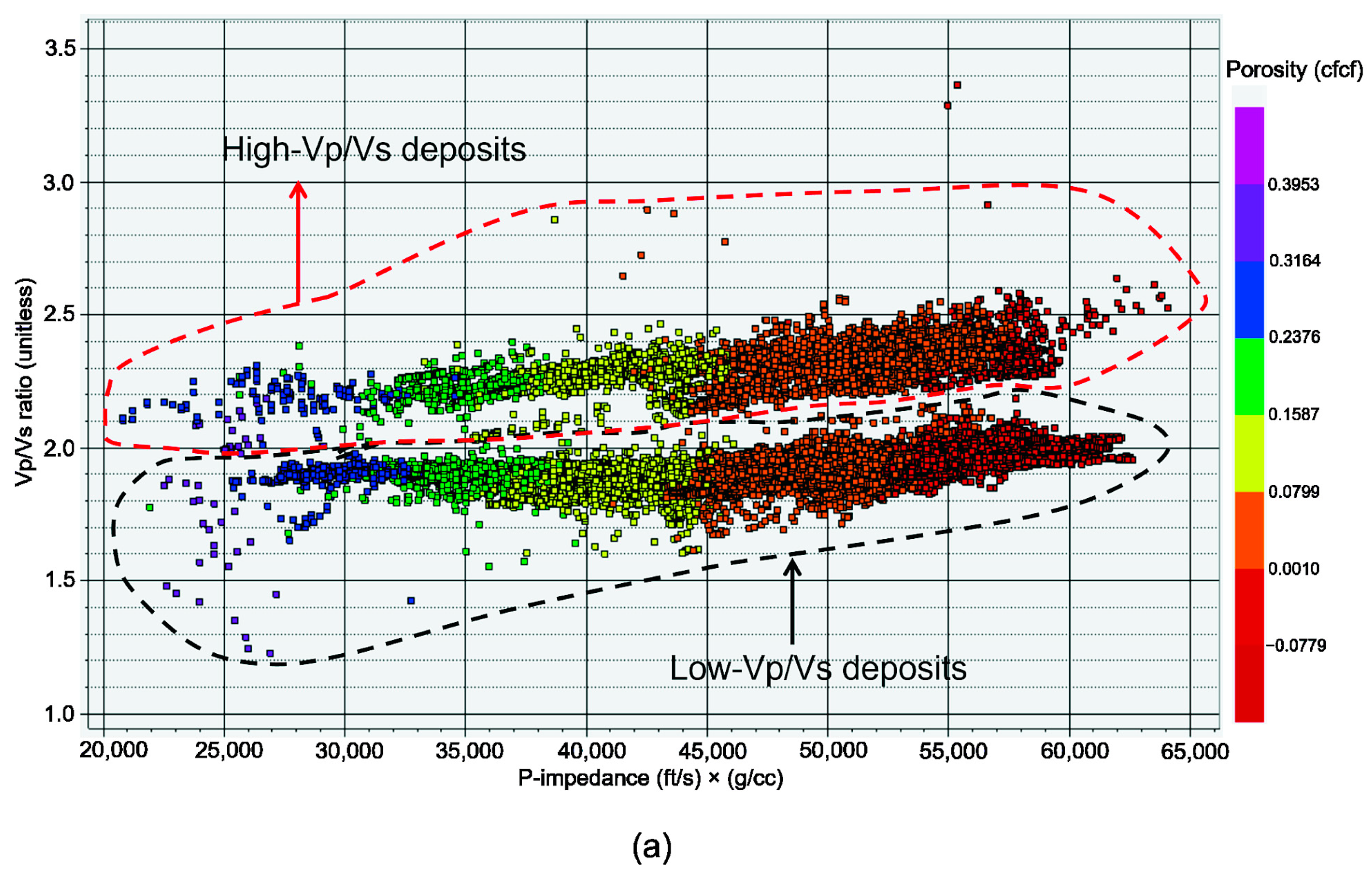

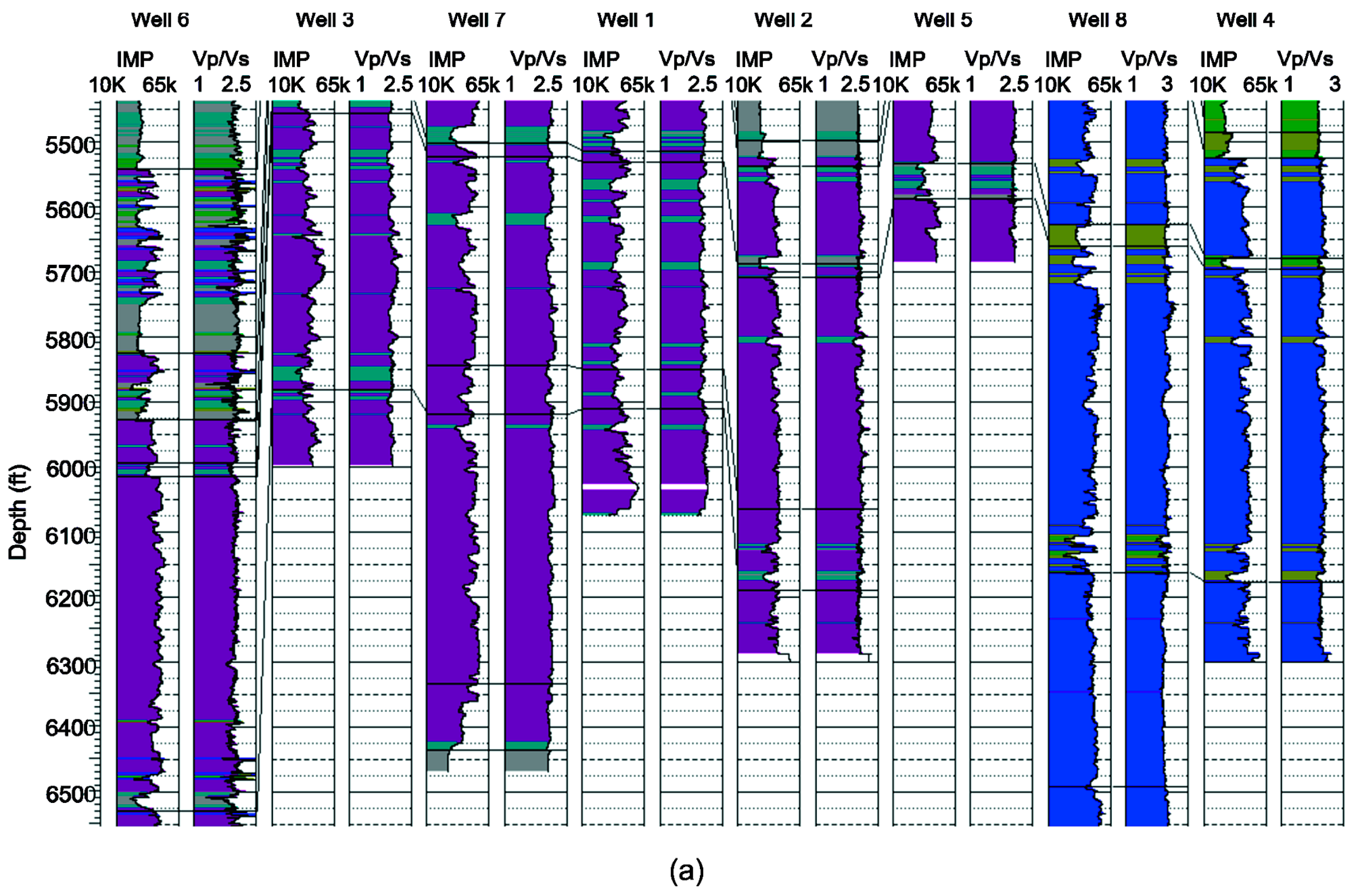
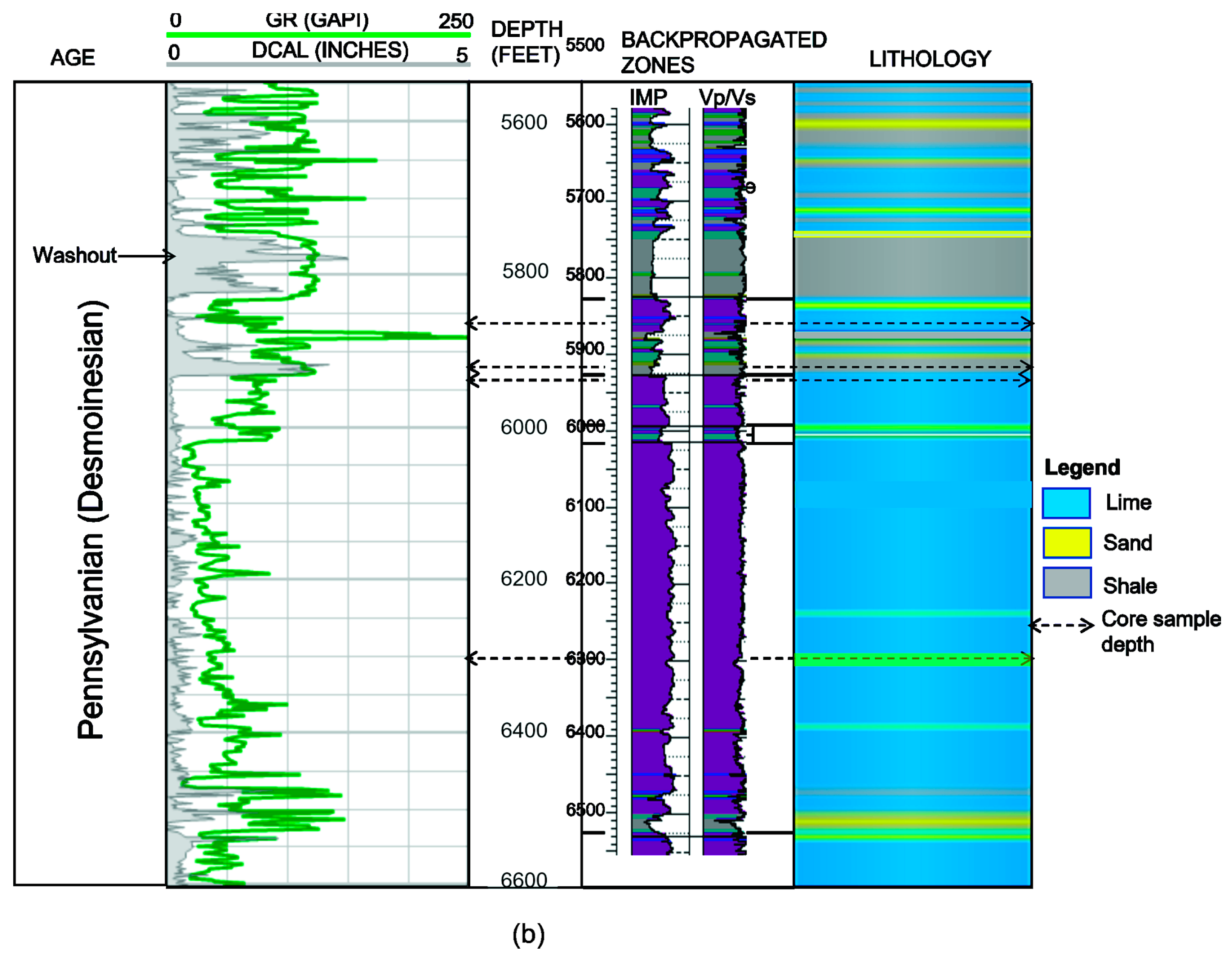
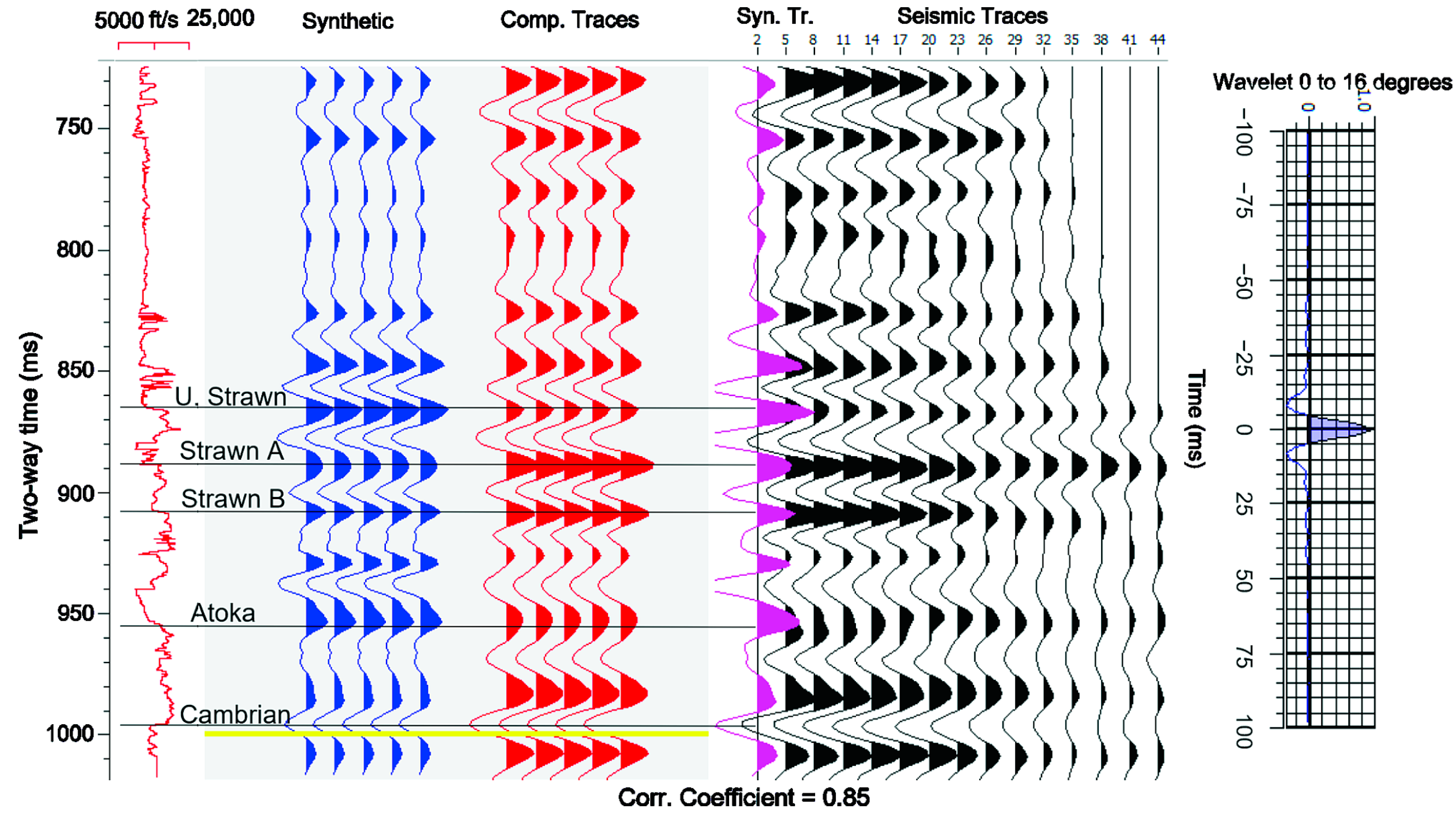
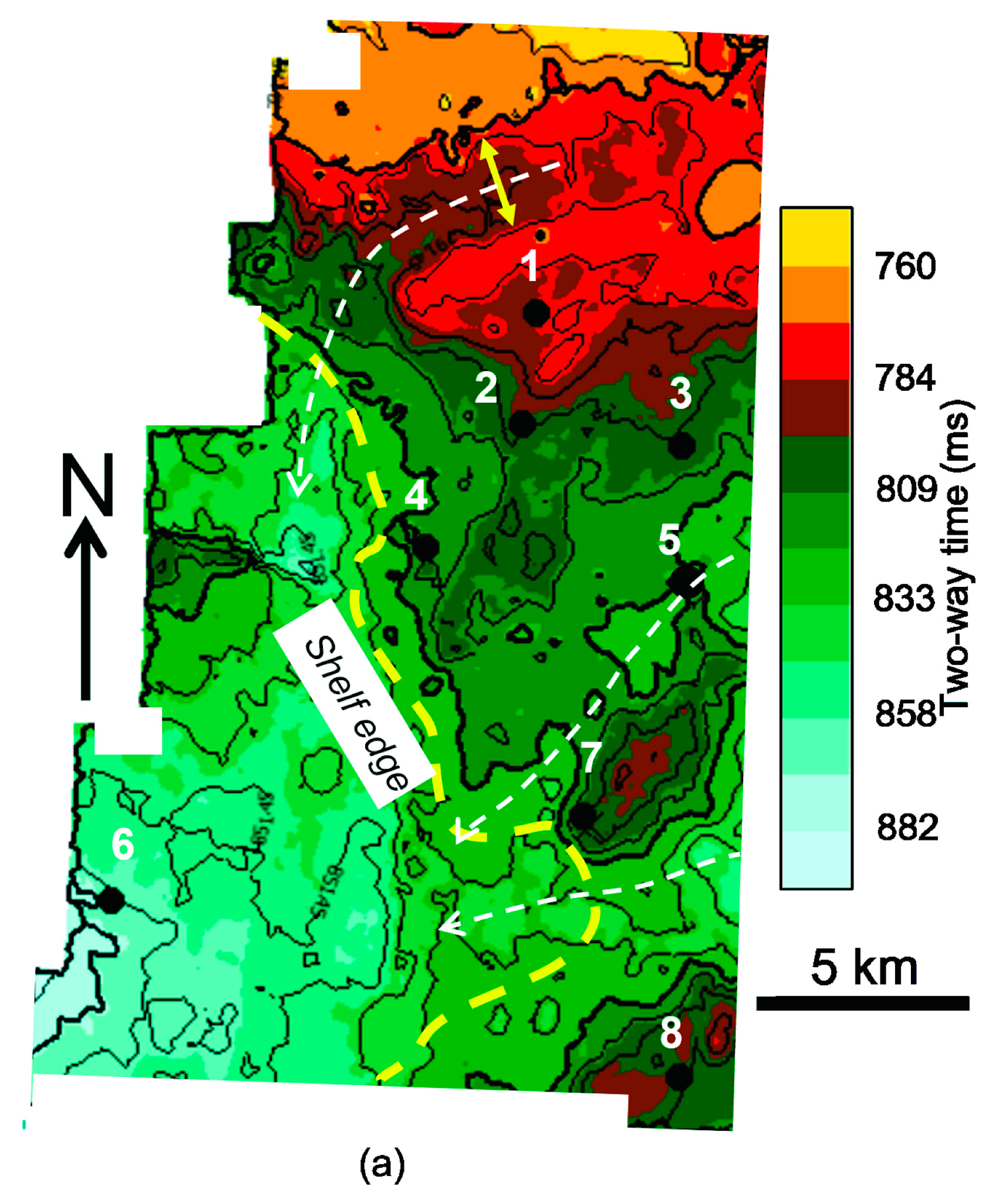
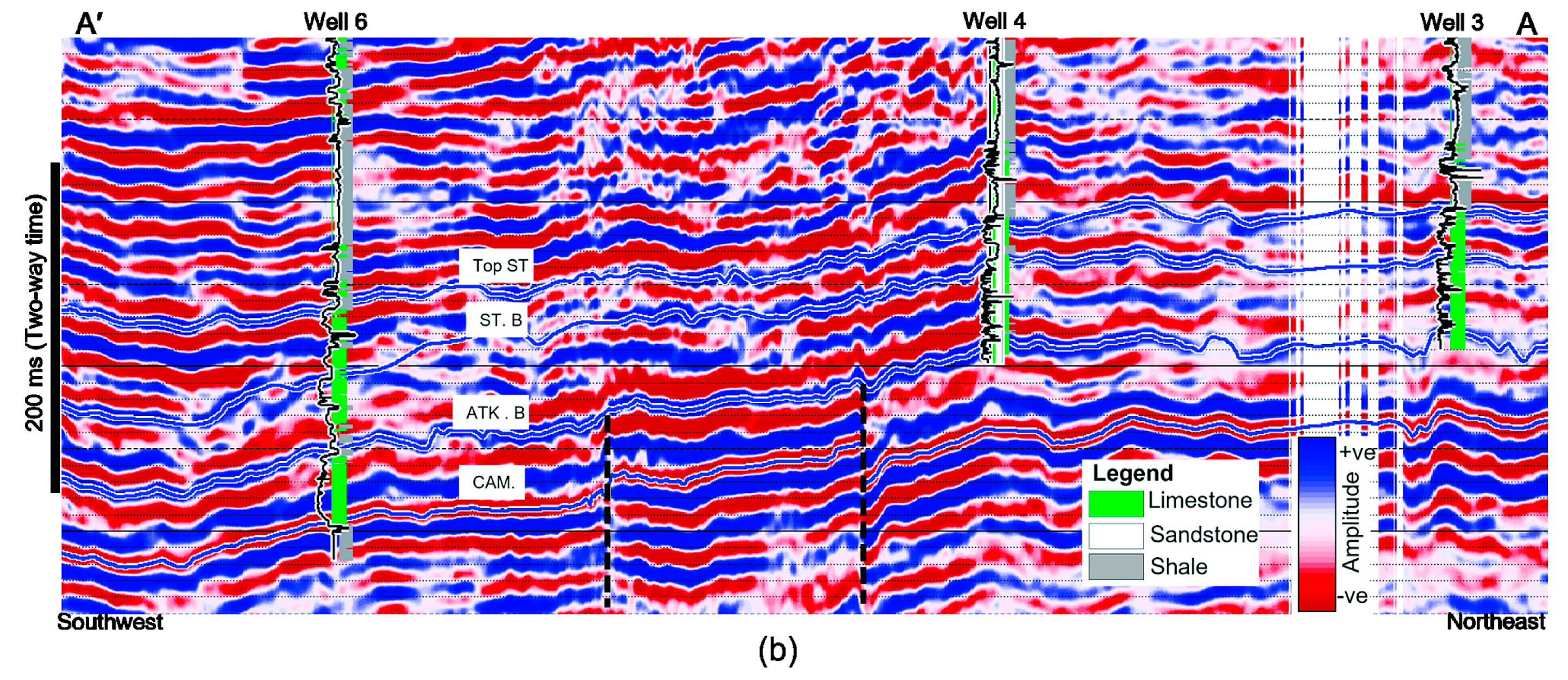
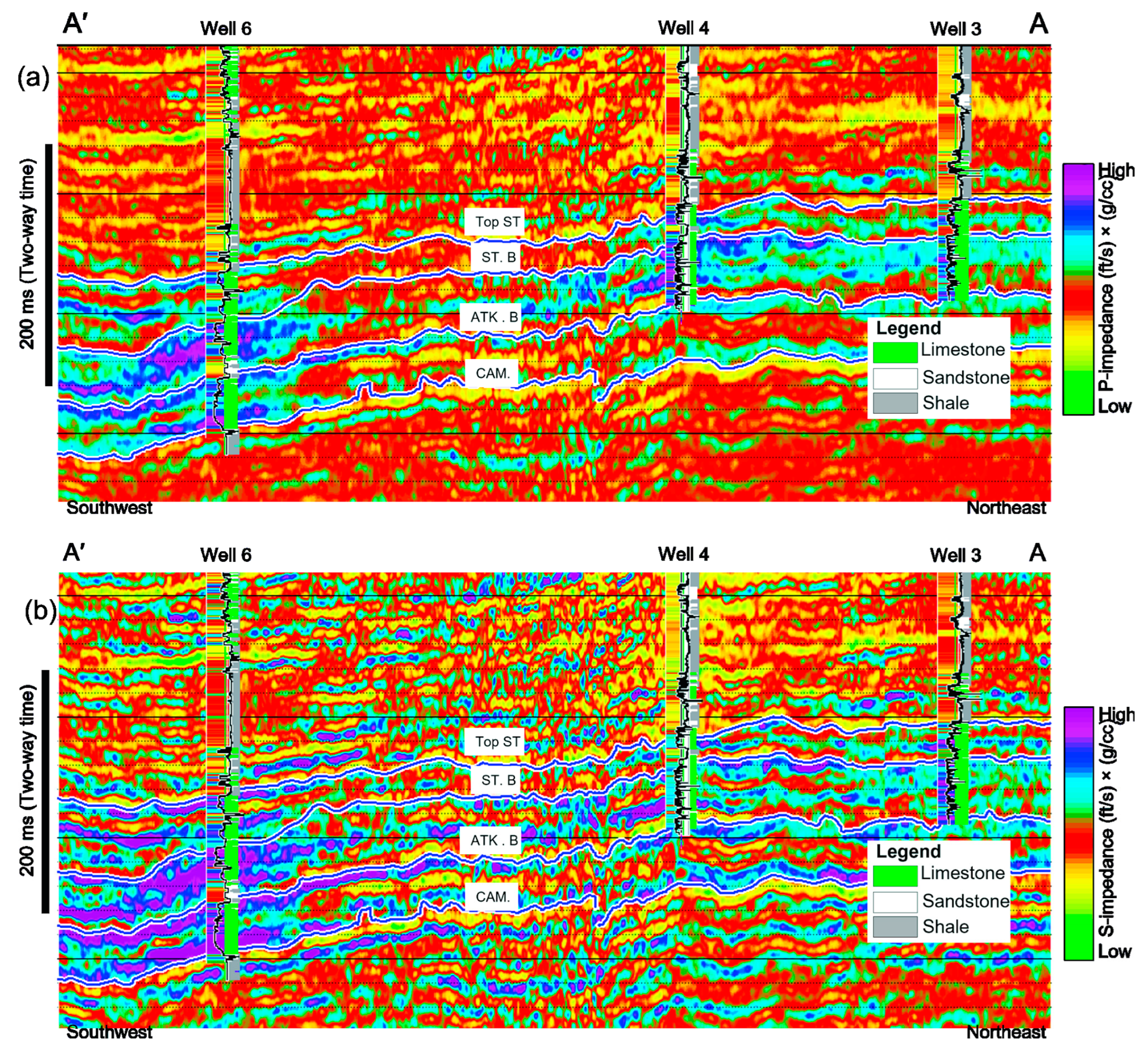

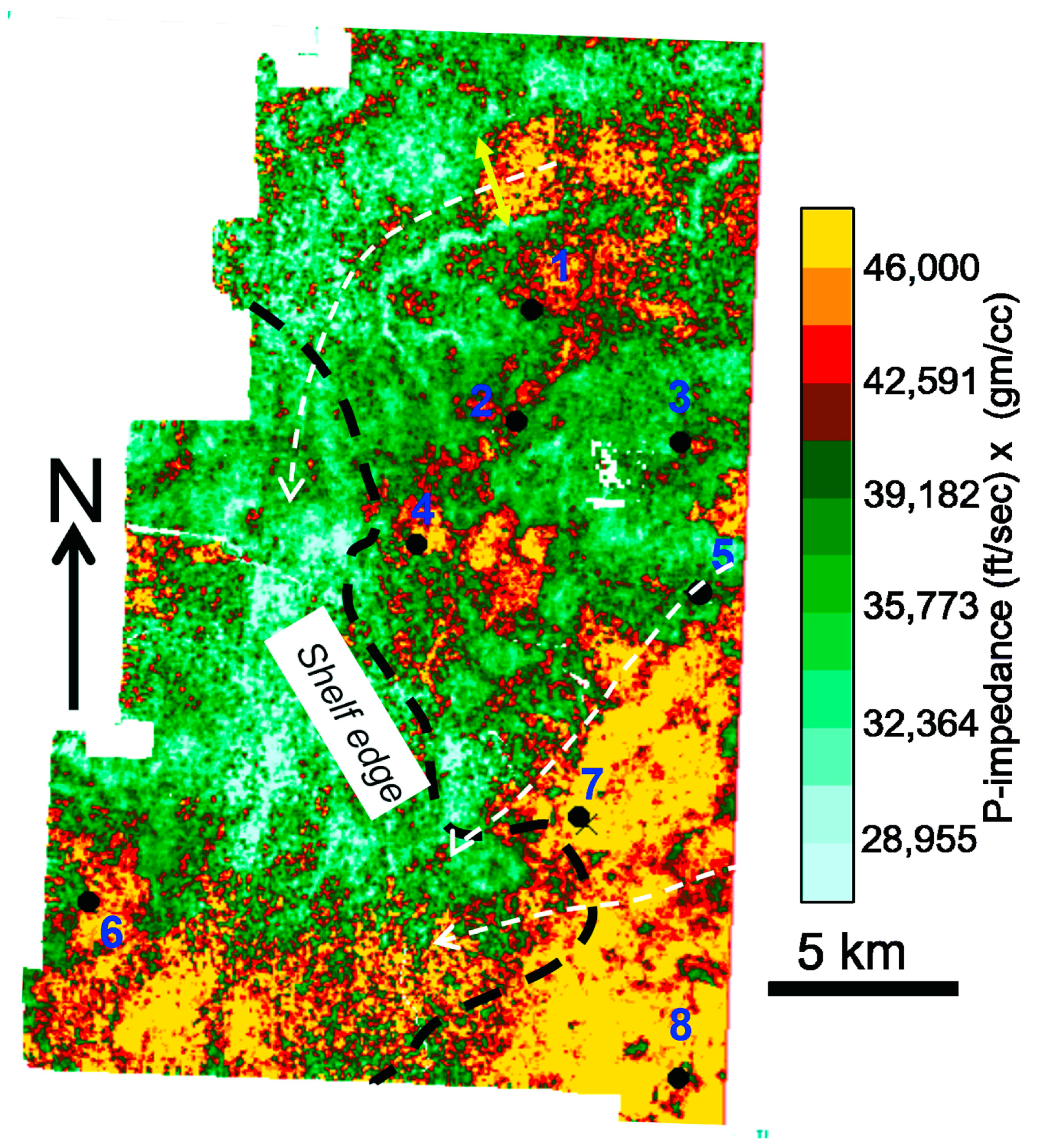

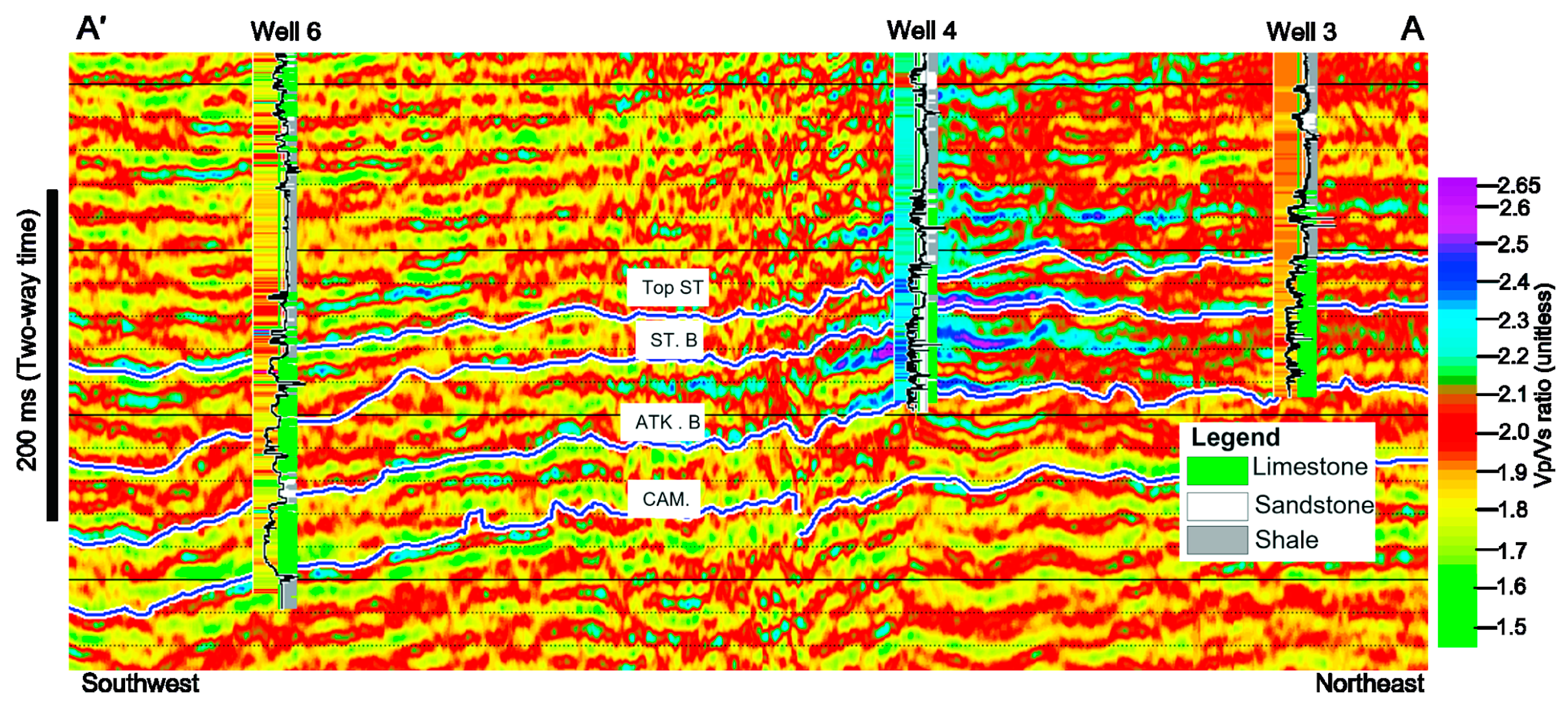
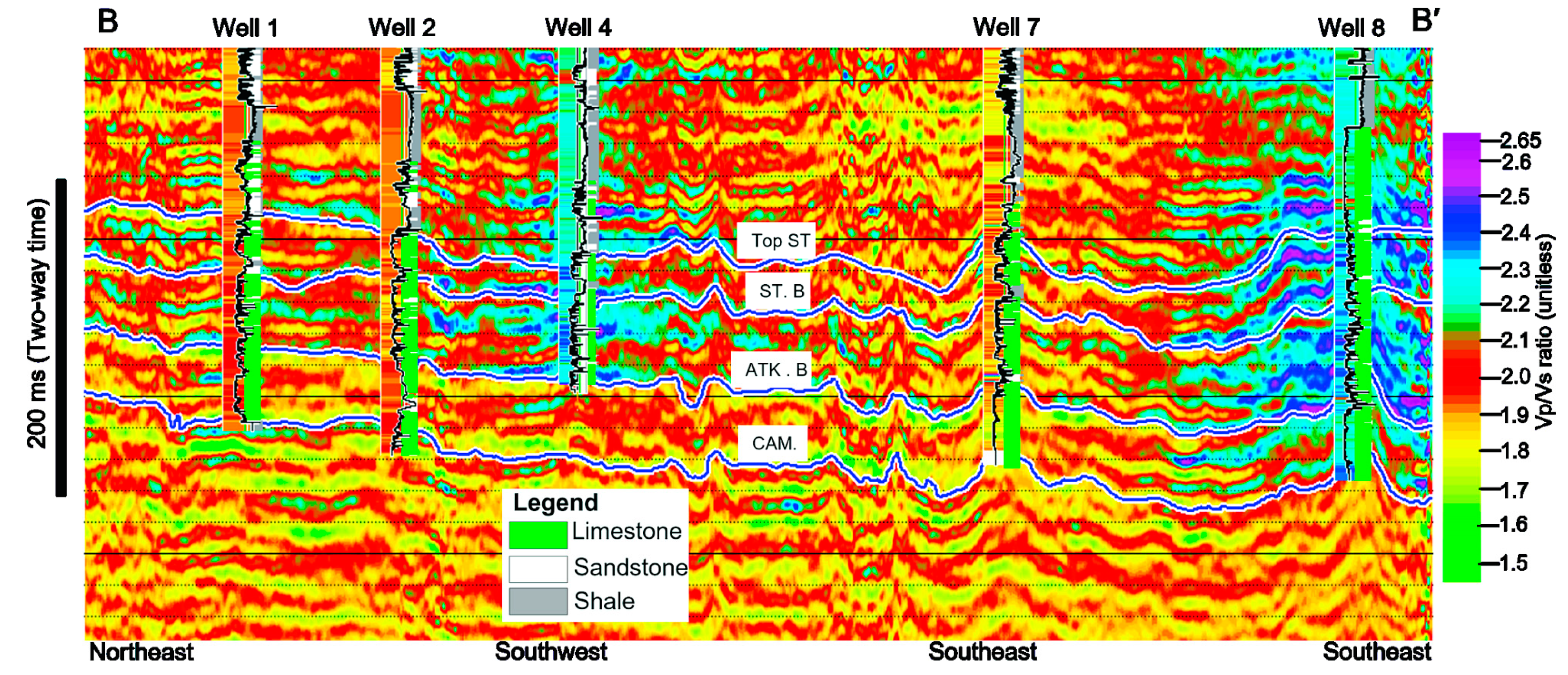
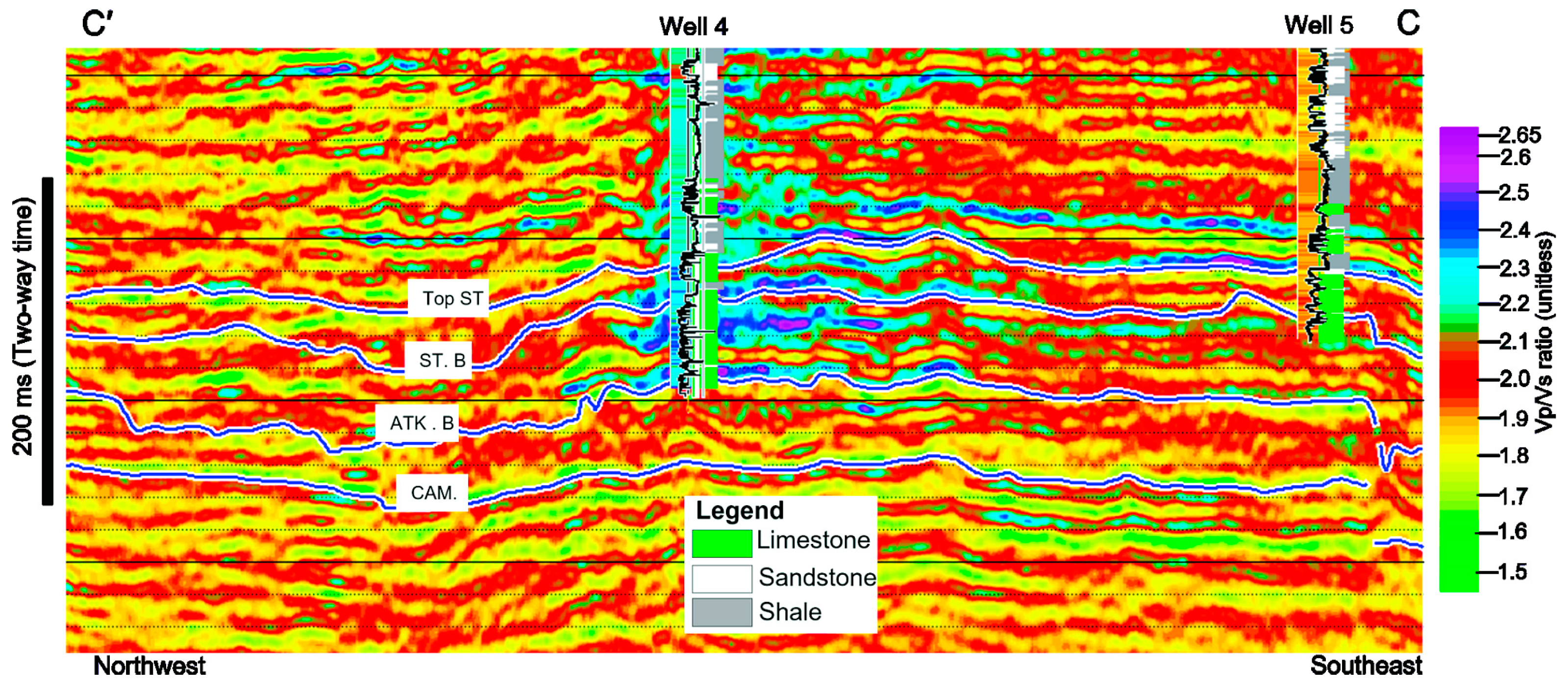

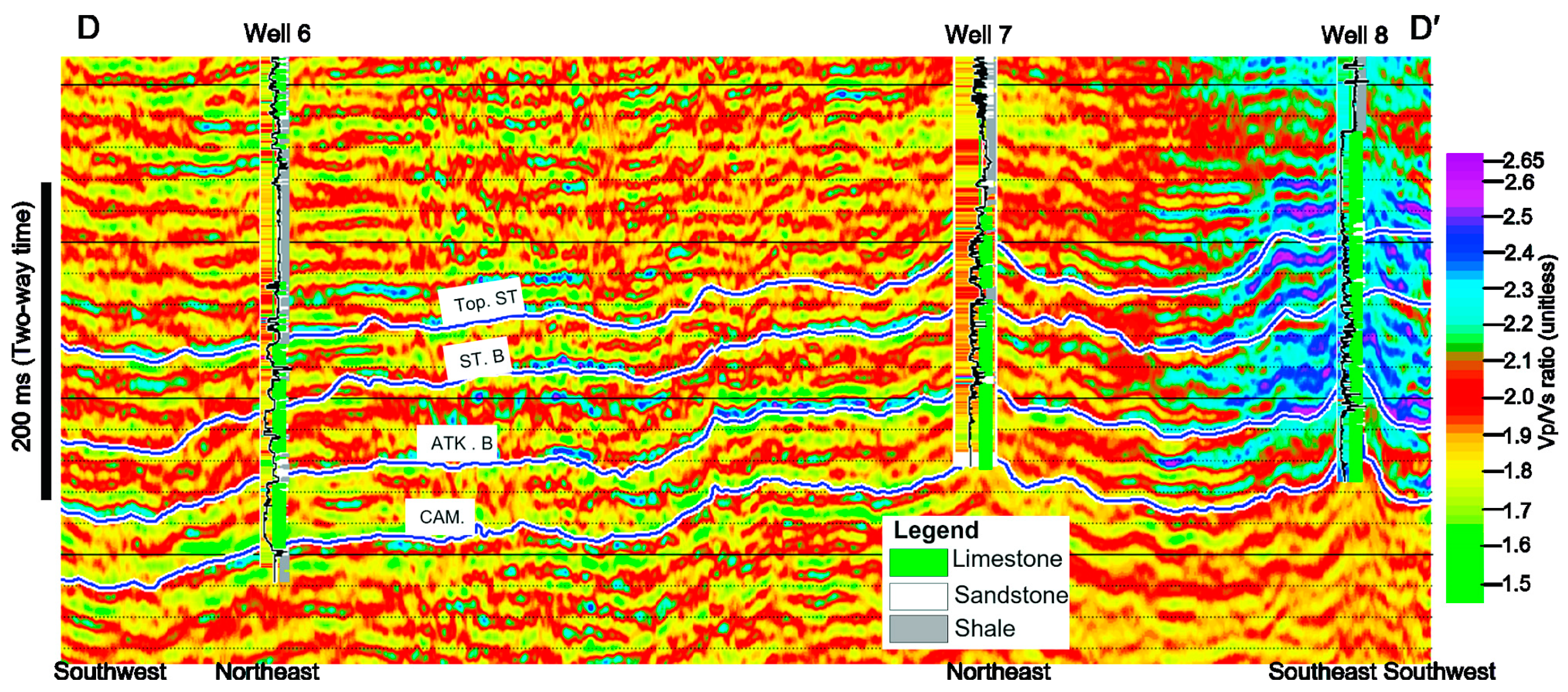
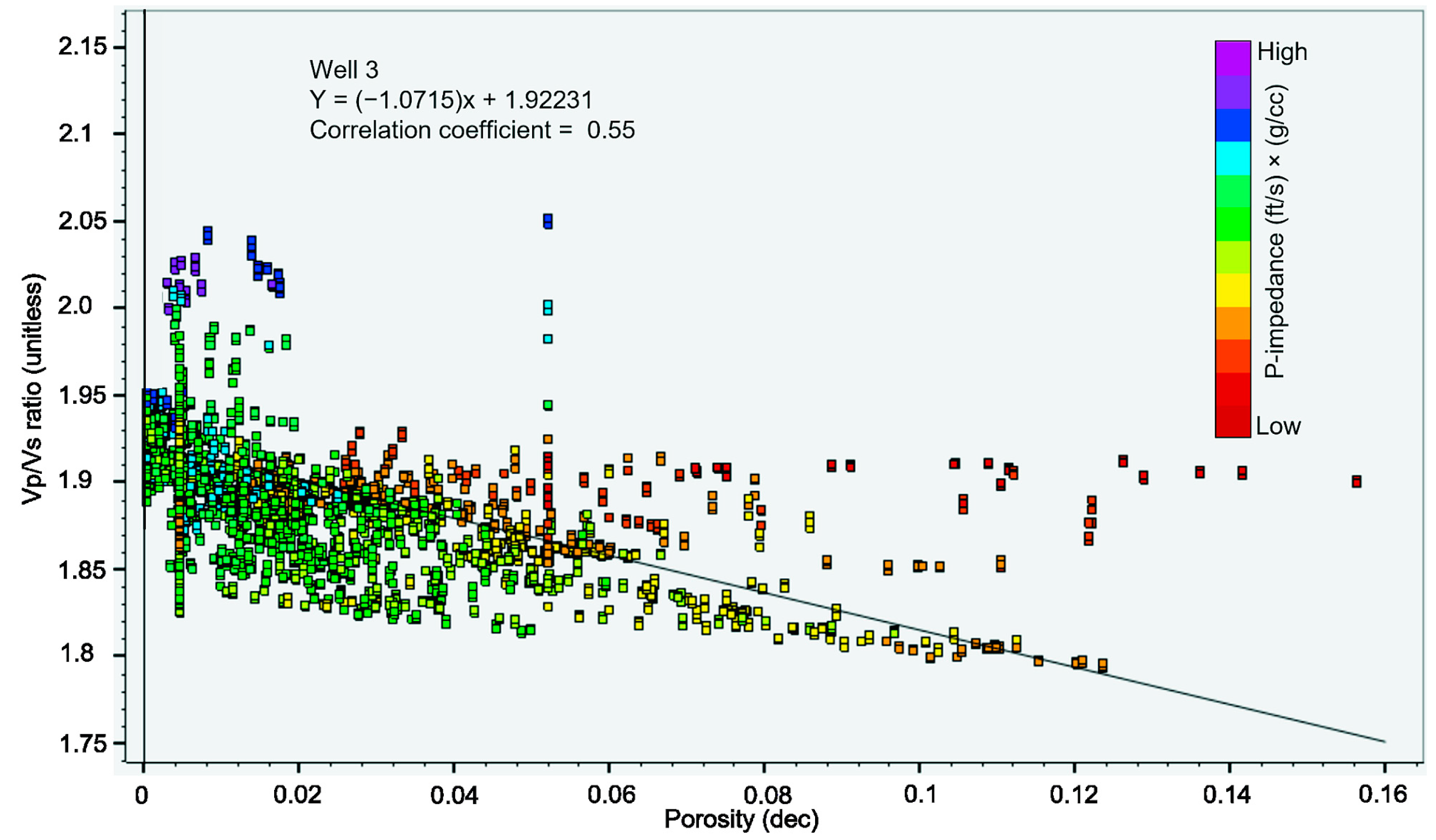

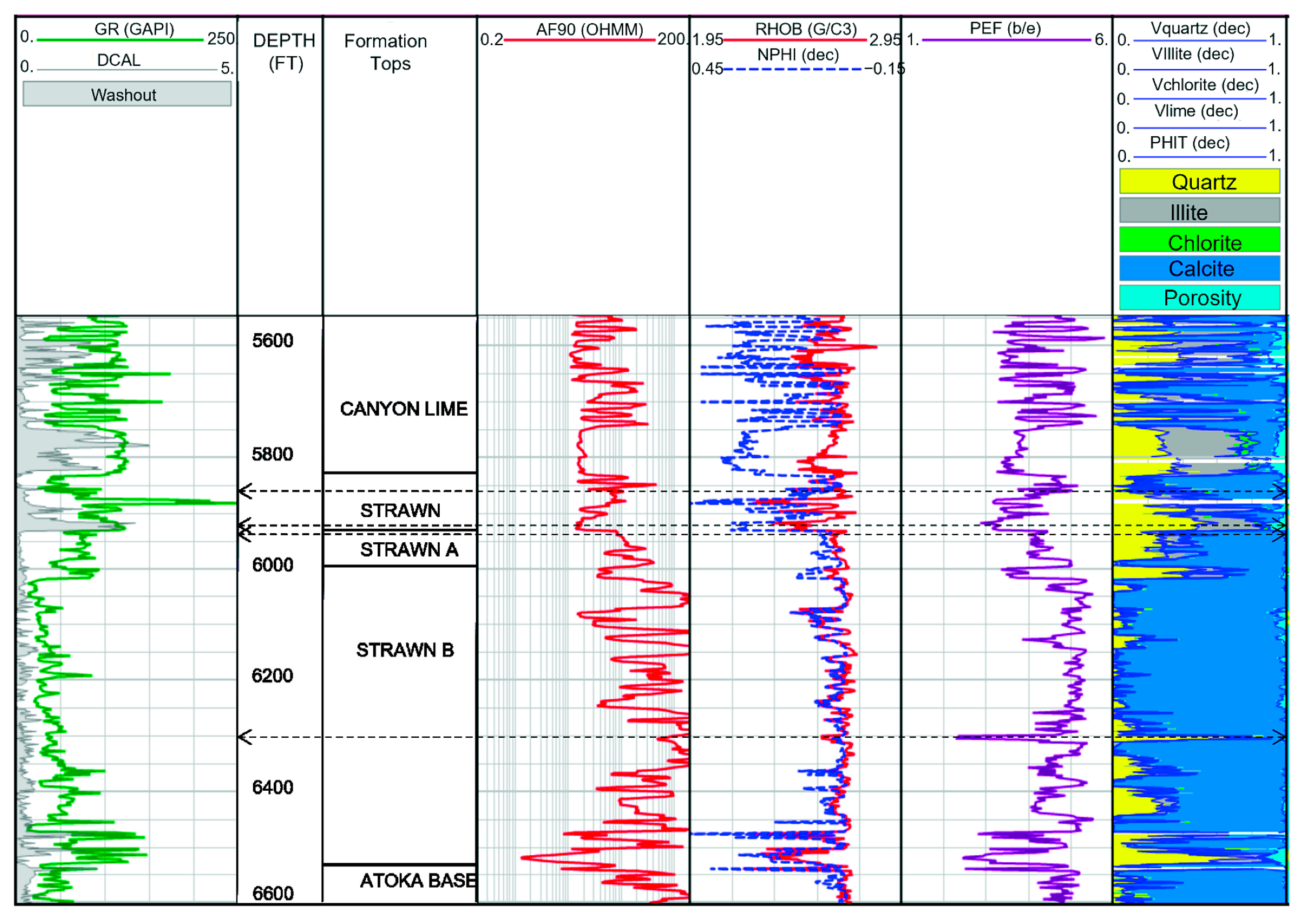



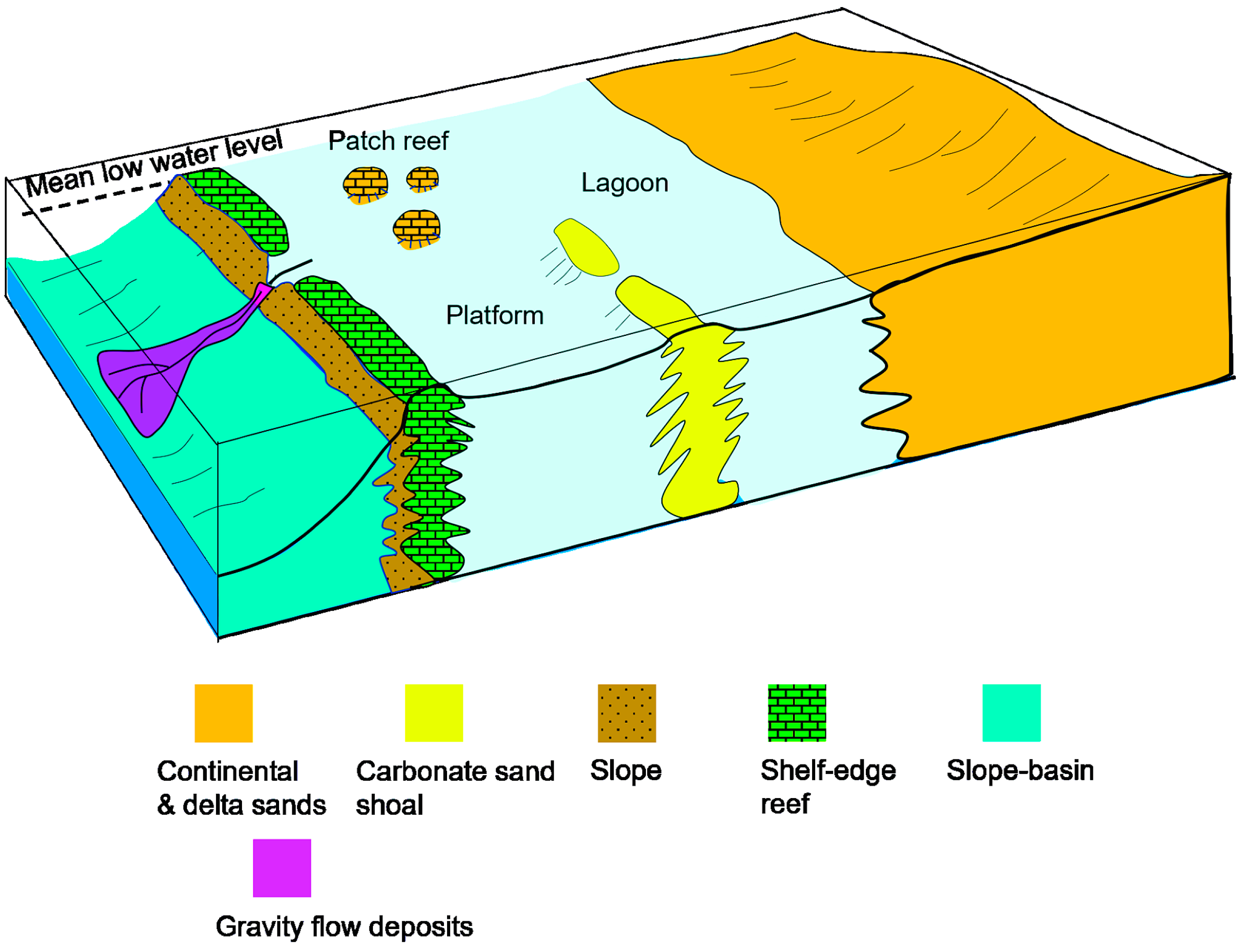
Disclaimer/Publisher’s Note: The statements, opinions and data contained in all publications are solely those of the individual author(s) and contributor(s) and not of MDPI and/or the editor(s). MDPI and/or the editor(s) disclaim responsibility for any injury to people or property resulting from any ideas, methods, instructions or products referred to in the content. |
© 2023 by the authors. Licensee MDPI, Basel, Switzerland. This article is an open access article distributed under the terms and conditions of the Creative Commons Attribution (CC BY) license (https://creativecommons.org/licenses/by/4.0/).
Share and Cite
Ogiesoba, O.C.; Bhattacharya, S.; Karakaya, S.; Cortez, T. Prestack Seismic Velocity Ratio Evaluation of a Mixed Siliciclastic–Carbonate Formation: Case Study from the Strawn Group on the Eastern Shelf Texas. Energies 2023, 16, 2037. https://doi.org/10.3390/en16042037
Ogiesoba OC, Bhattacharya S, Karakaya S, Cortez T. Prestack Seismic Velocity Ratio Evaluation of a Mixed Siliciclastic–Carbonate Formation: Case Study from the Strawn Group on the Eastern Shelf Texas. Energies. 2023; 16(4):2037. https://doi.org/10.3390/en16042037
Chicago/Turabian StyleOgiesoba, Osareni C., Shuvajit Bhattacharya, Sarp Karakaya, and Trey Cortez. 2023. "Prestack Seismic Velocity Ratio Evaluation of a Mixed Siliciclastic–Carbonate Formation: Case Study from the Strawn Group on the Eastern Shelf Texas" Energies 16, no. 4: 2037. https://doi.org/10.3390/en16042037




